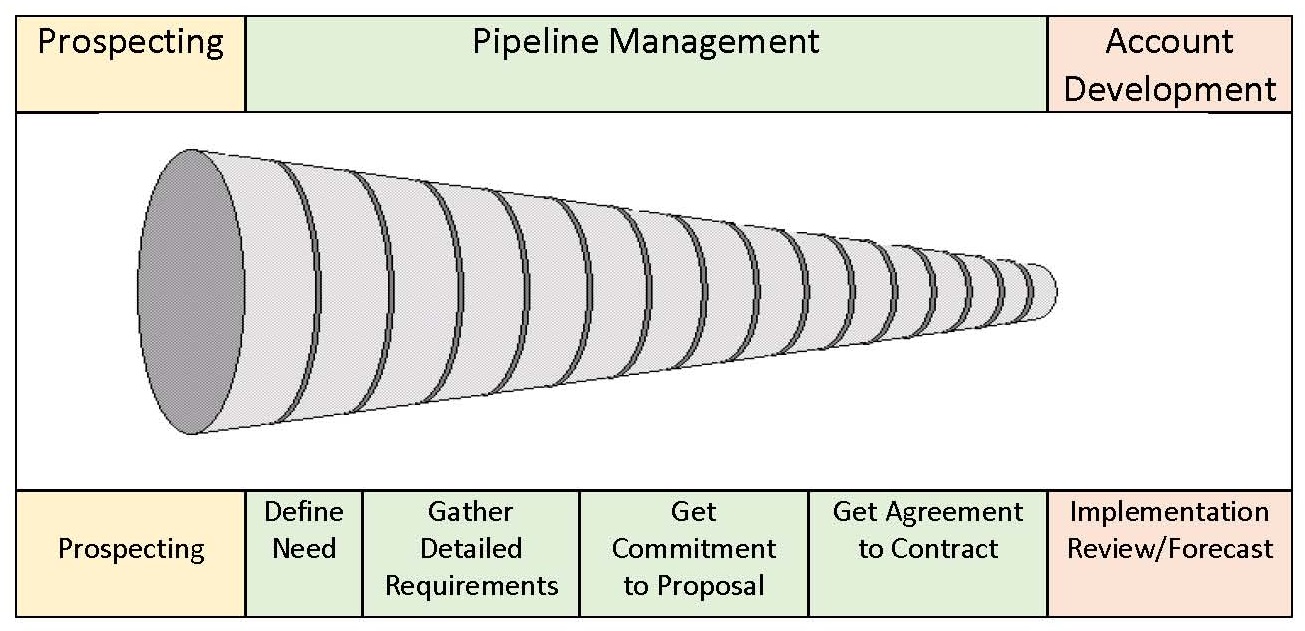Suddenly Your Sales Team Is Inside. Now What?
Dr. Richard L. Chambers, America’s Return Inc.

Three useful tips to turn bad times to good.
Prospects are afraid to have visitors on-site. National conferences are canceled, meetings with qualified prospects postponed indefinitely. Cold callers find shuttered offices. Your frustrated business development staff, once confident in their face-to-face ability to win new customers, is now inside-only, trying to make do with phone, email, and video contact. As a sales leader, you are faced with the additional difficulty of managing your reps at a distance.
This article provides VAR and MSP sales leaders with the three inside sales tips that have had the greatest instant impact on the 10,000 graduates using my solution sales methodology, The S.A.L.E.S. System. Your reps who master these tactics now will never abandon them when times are better.
- Prospecting. How to get through voicemail to talk to people live.
- Pipeline Management: What to ask on the phone to find opportunities worth pursuing.
- Account Development: How to engage with existing customers to keep their loyalty, expand your services, and build your referral base.

Figure 1: Sales pipeline stages
Prospecting: Get Past The Automated Voicemail System
Voicemail will be the single biggest hurdle faced by reps selling inside. The response rate from voicemail messages is often less than 2 percent, a demoralizing outcome from hours of preparation and outreach. The following steps increase live engagement to a 15 to 20 percent level, through tactics nimbly employed between the moment of hearing a voicemail greeting and leaving your message.
- Reach voicemail greeting of contact. Listen to the entire message before acting. Confirm the name, pronunciation of the name, personal announcement regarding schedule, instructions to reach others in his/her absence, and any alternate phone numbers. Also note if the voicemail system instructs you on more options to take once you have completed your message (usually by hitting the # or 1 key); the option to playback and re-record the message before sending assures quality and makes Reps less nervous.
- Don’t leave a message quite yet. Immediately after hearing the full greeting, press the “zero” key to talk to any receptionist. Introduce yourself and mention that you were trying to reach the contact, got voicemail, but wanted to ask some quick questions first: “Who am I speaking with?” “What is your role there?” (Note: the “receptionist” is often the CEO at an SMB). “I wanted to talk to John about X. Is he the right person?”
- Get an alternate name, continue to probe with the receptionist, or proceed to leave a message with the original contact. If possible, use the receptionist’s name in your message as evidence that you have passed through some screening.
- Your message should answer the following questions in the mind of the listener: “Who is this? How did you get my name? What do you want? What’s in it for me?” Research has shown that 17 seconds is average before a listener decides to hit “delete” or to give the message a full listen. Your strongest proposition should, therefore, be first, especially if it is a referring name.
Your sales reps will certainly talk with more people using this protocol, creating more chances to discuss your solution. The risk is that the overexcitement from the conversation will have the rep plunging more quickly to a proposal stage without first assessing the likelihood of success. This brings us to the next tip on qualifying opportunities.
Pipeline Management: Qualify Business Need Before Quoting
Many reps engaged in a call-out blitz will dismiss a fruitless day by declaring, “These leads are junk,” loosely translated as “These leads aren’t low-hanging fruit.” Those same reps might also invest hours in a hopeless pursuit should an interested prospect expresses some curiosity. However, the best reps can assess a potential deal using the four cornerstones of qualifying, widely referred to as BANT: Budget, Authority, Need, and Timing. The best reps know when to nurture an opportunity or when to pull the plug based on what they have discovered. Here are some highlights.
- Budget. Most businesses have not budgeted for what you sell. Reps must determine a) the cost of them of not acting, b) the business outcomes you can create for them, and c) the financial scale of both. Read more in my article, The Good, The Bad And The Money: How To Sell Business Outcomes.
- Authority. A frequent woe is to spend hours with technical buyers who are then tasked with presenting the Rep’s proposal to an economic buyer, yet the engineers cannot tell a compelling return-on-investment story to the boss. The quickest fix is to engage the economic buyer directly at least briefly before investing in a technical deep dive.
- Need. Your solution is merely a vehicle to move your prospect from a current frustrating condition (Point A) to the desired outcome (Point B). Do not confuse your product features with their emotional need to get relief and gain benefit. A good litmus test question is: “What do you want to be able to do that you can’t do now?” More can be found here: Selling From A To B: The Shortest Distance Between ‘Problem’ And ‘Solved’.
- Timing. You may have defined sales stages with monthly quotas, but the customers have their own buying journey and time frame. Their arrival date is potentially years away and your effort to scoot them along prematurely creates a stall. The best reps query the prospect on all BANT fronts and program their calendars with nurturance steps tuned to the prospect’s readiness. Rather than seeing “junk leads,” those reps build their pipelines for later months.
BANT qualification should happen in depth at the “Define Needs” stage referred to in Figure 1. The evidence of poorly BANT-qualified opportunities is a pipeline bloated at the “Get Agreement to Proposal” stage where deals go to die. Knowing when to move forward and when to pull the plug frees you from poor time investment, allowing you to direct more attention to your biggest opportunity: your current account base.
Account Development: Insert Yourself In Your Customer’s Plans
While you are trying to develop new business, your competition is at a fever pitch trying to grab yours. If you have not already made it a strategic initiative to re-engage with current customers, now is the time to reach out broadly for an “Implementation Review and Forecast.”
- VARs. While most resellers are in transition to adding monthly recurring revenue (MRR) from cloud services, a legacy exists of completed infrastructure projects with scores of customers. These become warm “prospects” for new opportunities.
- MSPs. Having a predictable cash flow from MRR may create a state of “set and forget.” But those customers’ business requirements are not predictable: seasonality, staffing volatility, innovation, and regulatory changes can all cause a business owner to reexamine IT support. Further, the most profitable MSPs have been shown to derive around 30 percent of its revenue from product sales. That gain comes from hardware margins, project fees, and the higher prices that full-solution loyalty allows.
Whether you aim to grow your share, add new projects, or shore up your loyalty, schedule an “annual business review” over the phone. Do not just call your larger customers. Although you have more to lose or more to gain with the major accounts, extend your reach to smaller customers. They may not plan to stay small. Even lapsed accounts deserve a business review. Understanding why they left may help prevent attrition. The goal is to get the customer talking without the pressure of a sale. Some effective questions include:
- What is your impression of us?
- How do we compare to other services you have used or are aware of?
- What is your plan for the next 2 years, including sales growth, headcount, remote working, security, digital transformation?
- Note: with particularly positive feedback and a good relationship, ask politely for a testimonial letter and referrals. This step separates the intermediate Reps from the advanced.
These three key tips were not pulled from a tactics grab bag. Rather, the actions are highlights from a systematic approach to organizing your team’s work, whether based in the field or the call center. In future articles, we will examine metrics we have developed for managing growth when working with a remote team. Business conditions may never return to the old “normal.” Now is your chance to practice the fundamentals to succeed in any market.
 About The Author
About The Author
Dr. Richard L. Chambers is president of America’s Return Inc., provider of The S.A.L.E.S. System, an SMB channel sales development program helping OEMs, ISVs, distributors, VARs, and MSPs sell solutions with higher profit in less time. rchambers@americasreturn.com.
